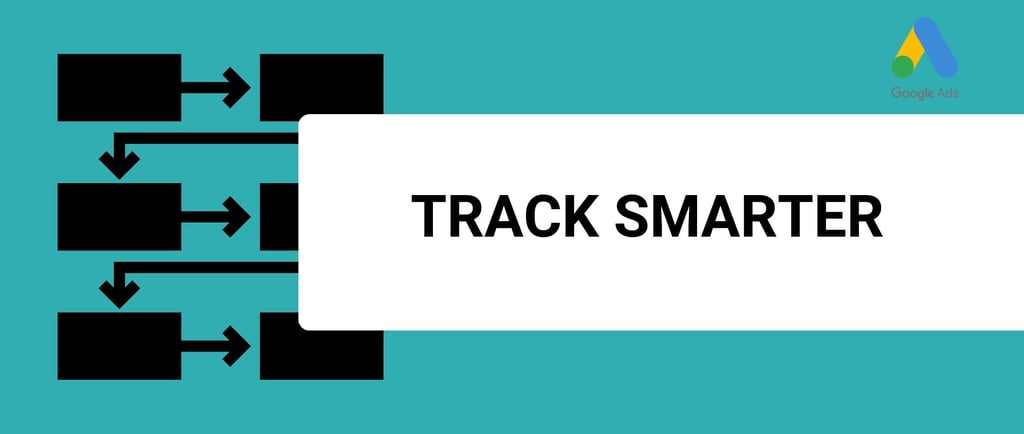Google Ads Attribution Models in 2024: Why Data-Driven Models Lead the Way
Discover the best Google Ads attribution models in 2024. Learn why data-driven attribution is the top choice and how to check the performance of your attribution models.
ADVANCED STRATEGIES
10/8/20244 min read


Is your business missing out on crucial conversions by using outdated Google Ads Attribution models?
In 2024, the digital advertising landscape continues to evolve, and businesses need to stay ahead by using the most effective tools available. One of the most critical decisions marketers can make is choosing the right attribution model within Google Ads to ensure they track conversions accurately and optimize ad performance. Choosing the wrong Google Ads attribution models could lead to wasted ad spend, inaccurate reporting, and missed growth opportunities.
In this article, we’ll explore the most relevant Google Ads attribution models for 2024 and explain why data-driven attribution should be the go-to choice for most businesses. Plus, we’ll show you how to evaluate the performance of different models in your own campaigns.
What Is an Attribution Model and Why It Matters in 2024
Google Ads attribution models determine how credit for conversions is assigned across various touchpoints in the customer journey. As consumers interact with your ads across multiple channels—whether it’s a search ad, a YouTube video, or a display ad—attribution models help businesses understand which interactions led to conversions and how to optimize future campaigns.
In 2024, as the digital landscape grows increasingly complex, using the right attribution model is more critical than ever. Customer journeys are no longer linear, and touchpoints span various devices and platforms. This shift has made traditional models less effective, while AI-powered models like data-driven attribution have risen in prominence for delivering more accurate insights.
The 2 Most Relevant Google Ads Attribution Models in 2024
As we move into 2024, not all attribution models hold equal relevance. Here are the four models that matter most this year:
1. Data-Driven Attribution (The Preferred Model)
What It Is:
Data-driven attribution is Google’s most advanced model, using machine learning and AI to analyze the customer journey. It distributes credit across multiple touchpoints based on how they influenced conversion, rather than relying on static rules.
Why It’s the Best Choice in 2024:
This model adapts to your campaign’s specific performance data, making it far more accurate than traditional models. It learns from patterns within your campaigns, identifying which interactions along the customer journey are driving conversions. Because it adjusts dynamically, data-driven attribution can give you the most precise insights into which ads work best—leading to better-optimized ad spend and higher ROI.
Relatable Example:
Imagine you’re running a campaign with ads across multiple platforms—Google Search, YouTube, and Display. A customer sees your YouTube ad but doesn’t convert immediately. A week later, they search for your product and click on a Google Search ad, finally making a purchase. In this case, a data-driven model would recognize that both the YouTube and Google Search ad played key roles in the conversion, not just the last click, helping you optimize your future ad spend across all channels.
2. Last-Click Attribution
Pros and Cons:
Last-click attribution gives all the credit to the final interaction before conversion. Although it’s simple and widely used, it fails to account for any previous touchpoints, which can significantly skew your understanding of the customer journey.
Why It’s Limited in 2024:
In today’s multi-channel world, most customers interact with several ads before converting. Relying solely on last-click attribution can lead to missed insights and poor decision-making, as it overlooks the value of earlier touchpoints that helped guide customers toward purchase. For businesses aiming to optimize ad spend, this model is less effective compared to more sophisticated models like data-driven attribution.
Why Most Businesses Should Choose Data-Driven Attribution
AI-Powered Optimization:
Data-driven attribution doesn’t just assign credit randomly. It analyzes large volumes of data using Google’s machine learning algorithms, ensuring that credit is accurately distributed to the touchpoints that matter most. This process continually improves over time, allowing businesses to get more detailed insights into customer behavior and adjust their strategies accordingly.
In 2024, businesses that are not using data-driven attribution are potentially leaving significant revenue on the table. With this model, you can truly see which channels and ads are driving results, giving you a complete view of the customer journey. If you’re relying on outdated models, you might be wasting valuable budget on touchpoints that don’t convert—or worse, neglecting touchpoints that are crucial to your sales funnel.
Some businesses worry that data-driven attribution might be too complex or difficult to implement. However, Google Ads has made this process seamless by automating much of the optimization through AI. You can set it up easily within your account, and the model will adjust to fit your campaign’s data without requiring hands-on management.
How to Check the Performance of Different Attribution Models
One of the most powerful features of Google Ads is that it allows you to compare the performance of different attribution models. To do this, follow these steps:
Go to your Google Ads account.
Navigate to the Tools & Settings menu and click on Measurement.
From there, select Attribution Reports.
You’ll be able to see how each model distributes credit across your campaigns, helping you make an informed decision about which model suits your business best.
Best Practices for Evaluation:
Test different attribution models over a set period to see how each one impacts your conversions and overall campaign performance. This approach gives you concrete data on which model is delivering the highest ROI.
Conclusion
In 2024, the right attribution model can be the difference between wasting ad spend and driving optimal conversions. For most businesses, data-driven attribution is the clear winner, offering advanced insights powered by machine learning.
Understanding how different touchpoints contribute to conversions and adjusting your ad spend accordingly can boost your ROI and scale your business more effectively.
If you’re ready to switch to data-driven attribution and maximize your Google Ads performance, contact us today for expert advice and a tailored strategy.
CONTACTS
incomewithdigitalmarketing@gmail.com
BOOK WITH US
SERVICES
Google Ads Assisstance
Google Analytics Setup
Google My Business Management
